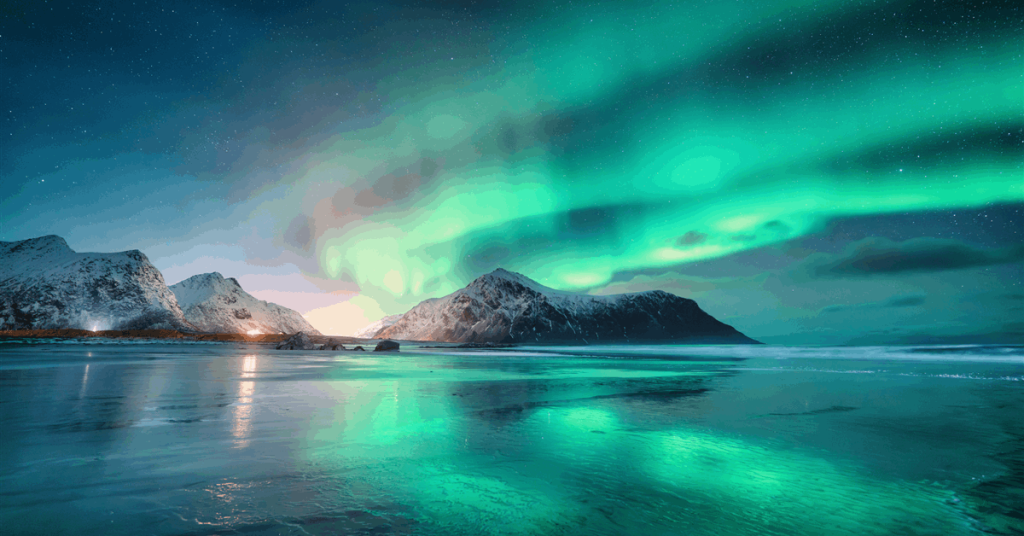The Northern Lights carbon, capture and storage (CCS) project in Norway, equally owned by Equinor ASA, Shell PLC and TotalEnergies SE, has injected its first carbon dioxide (CO2) volumes.
The captured emissions came from Heidelberg Materials’ cement factory in Brevik. The CO2 was transported by vessel and injected 2,600 meters (8,530.18 feet) below the seabed 100 kilometers (62.14 miles) off the coast of Western Norway, according to the owners.
This launched operations for phase I, whose capacity of 1.5 million tonnes per annum (MMtpa) of CO2 has been fully booked.
“The world’s first third-party CO2 transport and storage facility is now in operation, contributing to reducing European greenhouse gas emissions”, Norway’s majority state-owned Equinor said in a statement Monday.
“Lifting new value chains like CO2 capture, transport and storage requires collaboration and effort across the value chain – from governments, industry and customers. With Northern Lights in operation, we have proven that this is possible”, said Irene Rummelhoff, executive vice president for marketing, midstream and processing at Equinor.
“Now, we look forward to leading safe and efficient operations on behalf of the Northern Lights partnership and use this as a stepping stone for the further development of CCS in Europe”.
Equinor targets a CO2 transport and storage capacity of 30-50 MMtpa by 2035.
France’s TotalEnergies said separately, “The development of CO2 transport and storage services is one of the necessary levers for reducing emissions for European industry”.
Besides Heidelberg Materials, customers include Hafslund Celsio in Norway, Orsted in Denmark, Stockholm Exergi in Sweden and Yara in the Netherlands.
In March the Northern Lights owners approved the second phase with a NOK 7.5 billion ($741.36 million) investment.
Phase II will raise Northern Lights’ capacity to over five MMtpa. The expansion will leverage existing onshore and offshore infrastructures and install new onshore storage tanks, pumps, a jetty and injection wells, as well as commission new transport vessels. The partners expect to put phase II into service 2028.
“Northern Lights is in advanced discussions with several large European industrial customers to market the remaining storage capacity”, TotalEnergies said March.
Equinor said Monday, “The development of phase II with Equinor as TSP is well underway, with the delivery of nine new CO2 storage tanks at the Oygarden site this summer”.
Northern Lights forms the transport and storage part of the Longship CCS project launched September 2020 by the Norwegian government to demonstrate the capture of CO2 from industrial emitters for safe transport and storage. CO2 is to be captured at the Heidelberg Materials cement factory and a Hafslund Celsio waste incineration plant, then liquefied and collected by ships. The captured emissions are to be transported to an intermediate storage facility onshore Oygarden, before being pumped through pipes into the Norwegian continental shelf, according to Equinor.
It took about three months for the inaugural operation, from transport to injection, to be completed. The first CO2 shipment was transported to Oygarden early June, as announced by the Norwegian government.
About 80 percent of the cost for building phase I has been funded by the Norwegian state, while phase II has secured EUR 131 million ($152.52 million) from the European Union’s Connecting Europe Facility. The EU funding counts toward the total phase II investment of NOK 7.5 billion.
Equinor remains the technical service provider for phase II and will be responsible for its construction and operation, according to the company.
To contact the author, email jov.onsat@rigzone.com
element
var scriptTag = document.createElement(‘script’);
scriptTag.src = url;
scriptTag.async = true;
scriptTag.onload = implementationCode;
scriptTag.onreadystatechange = implementationCode;
location.appendChild(scriptTag);
};
var div = document.getElementById(‘rigzonelogo’);
div.innerHTML += ” +
‘‘ +
”;
var initJobSearch = function () {
//console.log(“call back”);
}
var addMetaPixel = function () {
if (-1 > -1 || -1 > -1) {
/*Meta Pixel Code*/
!function(f,b,e,v,n,t,s)
{if(f.fbq)return;n=f.fbq=function(){n.callMethod?
n.callMethod.apply(n,arguments):n.queue.push(arguments)};
if(!f._fbq)f._fbq=n;n.push=n;n.loaded=!0;n.version=’2.0′;
n.queue=[];t=b.createElement(e);t.async=!0;
t.src=v;s=b.getElementsByTagName(e)[0];
s.parentNode.insertBefore(t,s)}(window, document,’script’,
‘https://connect.facebook.net/en_US/fbevents.js’);
fbq(‘init’, ‘1517407191885185’);
fbq(‘track’, ‘PageView’);
/*End Meta Pixel Code*/
} else if (0 > -1 && 71 > -1)
{
/*Meta Pixel Code*/
!function(f,b,e,v,n,t,s)
{if(f.fbq)return;n=f.fbq=function(){n.callMethod?
n.callMethod.apply(n,arguments):n.queue.push(arguments)};
if(!f._fbq)f._fbq=n;n.push=n;n.loaded=!0;n.version=’2.0′;
n.queue=[];t=b.createElement(e);t.async=!0;
t.src=v;s=b.getElementsByTagName(e)[0];
s.parentNode.insertBefore(t,s)}(window, document,’script’,
‘https://connect.facebook.net/en_US/fbevents.js’);
fbq(‘init’, ‘1517407191885185’);
fbq(‘track’, ‘PageView’);
/*End Meta Pixel Code*/
}
}
// function gtmFunctionForLayout()
// {
//loadJS(“https://www.googletagmanager.com/gtag/js?id=G-K6ZDLWV6VX”, initJobSearch, document.body);
//}
// window.onload = (e => {
// setTimeout(
// function () {
// document.addEventListener(“DOMContentLoaded”, function () {
// // Select all anchor elements with class ‘ui-tabs-anchor’
// const anchors = document.querySelectorAll(‘a .ui-tabs-anchor’);
// // Loop through each anchor and remove the role attribute if it is set to “presentation”
// anchors.forEach(anchor => {
// if (anchor.getAttribute(‘role’) === ‘presentation’) {
// anchor.removeAttribute(‘role’);
// }
// });
// });
// }
// , 200);
//});

